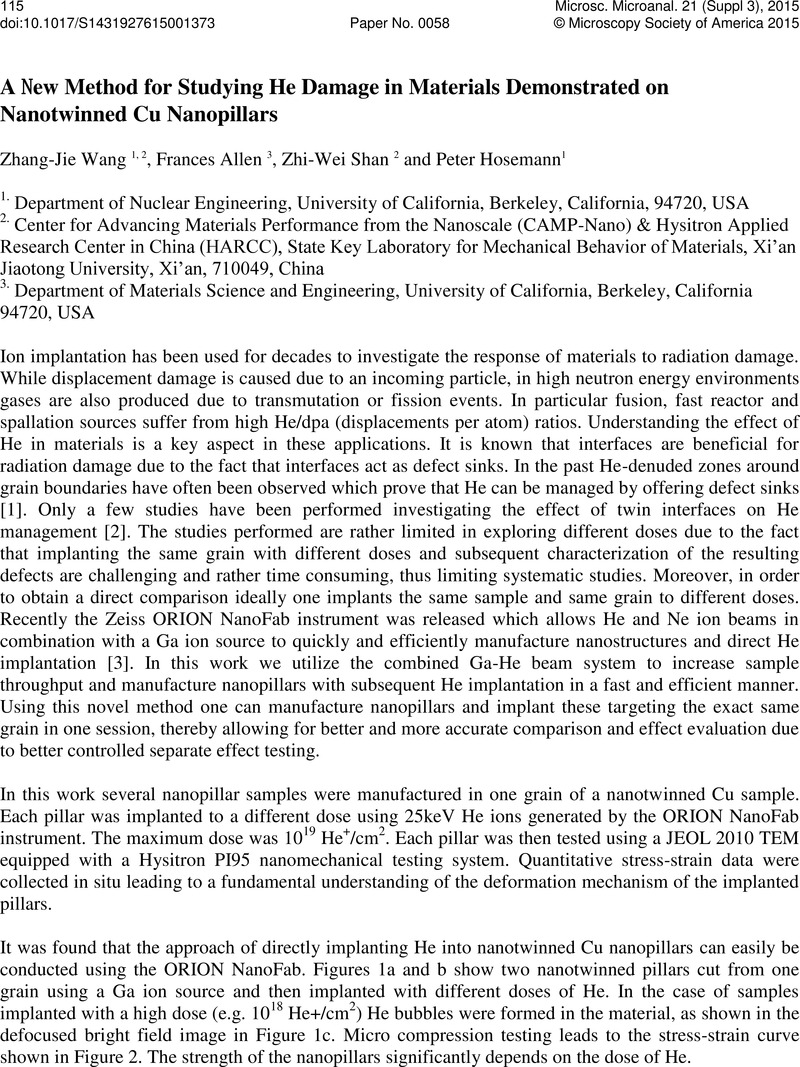Crossref Citations
This article has been cited by the following publications. This list is generated based on data provided by Crossref.
Chen, Zhe
Niu, Liang-Liang
Wang, Zhanlei
Tian, Lifeng
Kecskes, Laszlo
Zhu, Kaigui
and
Wei, Qiuming
2018.
A comparative study on the in situ helium irradiation behavior of tungsten: Coarse grain vs. nanocrystalline grain.
Acta Materialia,
Vol. 147,
Issue. ,
p.
100.
Lifeng, Tian
Pei, Liu
Xuanze, Li
Yutian, Ma
and
Xiangmin, Meng
2021.
Cracks and blisters formed in nanocrystalline tungsten films by helium implantation.
Fusion Engineering and Design,
Vol. 172,
Issue. ,
p.
112879.





